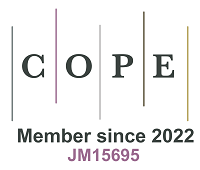REFERENCES
3. Jia L, Du Y, Chu L, et al; COAST Group. Prevalence, risk factors, and management of dementia and mild cognitive impairment in adults aged 60 years or older in China: a cross-sectional study. Lancet Public Health 2020;5:e661-71.
4. Langa KM, Levine DA. The diagnosis and management of mild cognitive impairment: a clinical review. JAMA 2014;312:2551-61.
5. Jessen F, Amariglio RE, Buckley RF, et al. The characterisation of subjective cognitive decline. Lancet Neurol 2020;19:271-8.
6. Jessen F, Wolfsgruber S, Kleineindam L, et al. Subjective cognitive decline and stage 2 of Alzheimer disease in patients from memory centers. Alzheimers Dement 2023;19:487-97.
7. Jessen F, Amariglio RE, van Boxtel M, et al; Subjective Cognitive Decline Initiative (SCD-I) Working Group. A conceptual framework for research on subjective cognitive decline in preclinical Alzheimer’s disease. Alzheimers Dement 2014;10:844-52.
8. Gao F, Lv X, Dai L, et al. A combination model of AD biomarkers revealed by machine learning precisely predicts Alzheimer’s dementia: China Aging and Neurodegenerative Initiative (CANDI) study. Alzheimers Dement 2022;19:749-60.
9. Chen S, Xu W, Xue C, et al. Voxelwise meta-analysis of gray matter abnormalities in mild cognitive impairment and subjective cognitive decline using activation likelihood estimation. J Alzheimers Dis 2020;77:1495-512.
10. Fan LY, Lai YM, Chen TF, et al. Diminution of context association memory structure in subjects with subjective cognitive decline. Hum Brain Mapp 2018;39:2549-62.
11. Poulin SP, Dautoff R, Morris JC, Barrett LF, Dickerson BC; Alzheimer’s Disease Neuroimaging Initiative. Amygdala atrophy is prominent in early Alzheimer’s disease and relates to symptom severity. Psychiatry Res 2011;194:7-13.
12. Chen J, Zhang Z, Li S. Can multi-modal neuroimaging evidence from hippocampus provide biomarkers for the progression of amnestic mild cognitive impairment? Neurosci Bull 2015;31:128-40.
13. Ferreira LK, Diniz BS, Forlenza OV, Busatto GF, Zanetti MV. Neurostructural predictors of Alzheimer’s disease: a meta-analysis of VBM studies. Neurobiol Aging 2011;32:1733-41.
14. Stern Y, Arenaza-Urquijo EM, Bartrés-Faz D, et al; the Reserve, Resilience and Protective Factors PIA Empirical Definitions and Conceptual Frameworks Workgroup. Whitepaper: defining and investigating cognitive reserve, brain reserve, and brain maintenance. Alzheimers Dement 2020;16:1305-11.
15. Jiang J, Liu T, Crawford JD, et al. Stronger bilateral functional connectivity of the frontoparietal control network in near-centenarians and centenarians without dementia. Neuroimage 2020;215:116855.
16. Barulli D, Stern Y. Efficiency, capacity, compensation, maintenance, plasticity: emerging concepts in cognitive reserve. Trends Cogn Sci 2013;17:502-9.
17. Neitzel J, Franzmeier N, Rubinski A, Ewers M; Alzheimer’s Disease Neuroimaging Initiative (ADNI). Left frontal connectivity attenuates the adverse effect of entorhinal tau pathology on memory. Neurology 2019;93:e347-57.
18. Franzmeier N, Düzel E, Jessen F, et al. Left frontal hub connectivity delays cognitive impairment in autosomal-dominant and sporadic Alzheimer’s disease. Brain 2018;141:1186-200.
19. Franzmeier N, Duering M, Weiner M, Dichgans M, Ewers M; Alzheimer’s Disease Neuroimaging Initiative (ADNI). Left frontal cortex connectivity underlies cognitive reserve in prodromal Alzheimer disease. Neurology 2017;88:1054-61.
20. Franzmeier N, Hartmann J, Taylor ANW, et al. The left frontal cortex supports reserve in aging by enhancing functional network efficiency. Alzheimers Res Ther 2018;10:28.
21. Subramaniapillai S, Almey A, Natasha Rajah M, Einstein G. Sex and gender differences in cognitive and brain reserve: implications for Alzheimer’s disease in women. Front Neuroendocrinol 2021;60:100879.
22. Ewers M. Reserve in Alzheimer’s disease: update on the concept, functional mechanisms and sex differences. Curr Opin Psychiatry 2020;33:178-84.
23. Malpetti M, Ballarini T, Presotto L, Garibotto V, Tettamanti M, Perani D; Alzheimer’s Disease Neuroimaging Initiative (ADNI) database; Network for Efficiency and Standardization of Dementia Diagnosis (NEST-DD) database. Gender differences in healthy aging and Alzheimer’s Dementia: A18 F-FDG-PET study of brain and cognitive reserve. Hum Brain Mapp 2017;38:4212-27.
24. Perneczky R, Drzezga A, Diehl-Schmid J, Li Y, Kurz A. Gender differences in brain reserve: an (18)F-FDG PET study in Alzheimer’s disease. J Neurol 2007;254:1395-400.
25. Li X, Wang X, Su L, Hu X, Han Y. Sino Longitudinal Study on Cognitive Decline (SILCODE): protocol for a Chinese longitudinal observational study to develop risk prediction models of conversion to mild cognitive impairment in individuals with subjective cognitive decline. BMJ Open 2019;9:e028188.
26. Bondi MW, Edmonds EC, Jak AJ, et al. Neuropsychological criteria for mild cognitive impairment improves diagnostic precision, biomarker associations, and progression rates. J Alzheimers Dis 2014;42:275-89.
27. Jia XZ, Wang J, Sun HY, et al. RESTplus: an improved toolkit for resting-state functional magnetic resonance imaging data processing. Sci Bull 2019;64:953-4.
28. Villemagne VL, Burnham S, Bourgeat P, et al; Australian Imaging Biomarkers and Lifestyle (AIBL) Research Group. Amyloid β deposition, neurodegeneration, and cognitive decline in sporadic Alzheimer’s disease: a prospective cohort study. Lancet Neurol 2013;12:357-67.
29. Li TR, Wu Y, Jiang JJ, et al. Radiomics analysis of magnetic resonance imaging facilitates the identification of preclinical Alzheimer’s disease: an exploratory study. Front Cell Dev Biol 2020;8:605734.
30. Boots EA, Schultz SA, Almeida RP, et al. Occupational complexity and cognitive reserve in a middle-aged cohort at risk for Alzheimer’s disease. Arch Clin Neuropsychol 2015;30:634-42.
31. Belleville S, Mellah S, Cloutier S, et al; CIMA-Q group. Neural correlates of resilience to the effects of hippocampal atrophy on memory. Neuroimage Clin 2021;29:102526.
32. Bettcher BM, Gross AL, Gavett BE, et al. Dynamic change of cognitive reserve: associations with changes in brain, cognition, and diagnosis. Neurobiol Aging 2019;83:95-104.
33. Baumgaertel J, Haussmann R, Gruschwitz A, et al. Education and genetic risk modulate hippocampal structure in Alzheimer’s disease. Aging Dis 2016;7:553-60.
34. Shpanskaya KS, Choudhury KR, Hostage C Jr, Murphy KR, Petrella JR, Doraiswamy PM; Alzheimer’s Disease Neuroimaging Initiative. Educational attainment and hippocampal atrophy in the Alzheimer’s disease neuroimaging initiative cohort. J Neuroradiol 2014;41:350-7.
35. Kalzendorf J, Brueggen K, Teipel S. Cognitive reserve is not associated with hippocampal microstructure in older adults without dementia. Front Aging Neurosci 2019;11:380.
36. Perry BL, Roth AR, Peng S, Risacher SL, Saykin AJ, Apostolova LG. Social networks and cognitive reserve: network structure moderates the association between amygdalar volume and cognitive outcomes. J Gerontol B Psychol Sci Soc Sci 2022;77:1490-500.
37. Scott SA, DeKosky ST, Sparks DL, Knox CA, Scheff SW. Amygdala cell loss and atrophy in Alzheimer’s disease. Ann Neurol 1992;32:555-63.
38. Tang X, Holland D, Dale AM, Younes L, Miller MI; Alzheimer’s Disease Neuroimaging Initiative. The diffeomorphometry of regional shape change rates and its relevance to cognitive deterioration in mild cognitive impairment and Alzheimer’s disease. Hum Brain Mapp 2015;36:2093-117.
39. Du W, Ding C, Jiang J, Han Y. Women exhibit lower global left frontal cortex connectivity among cognitively unimpaired elderly individuals: a pilot study from SILCODE. J Alzheimers Dis 2021;83:653-63.
40. Skup M, Zhu H, Wang Y, et al; Alzheimer’s Disease Neuroimaging Initiative. Sex differences in grey matter atrophy patterns among AD and aMCI patients: results from ADNI. Neuroimage 2011;56:890-906.
41. Hua X, Hibar DP, Lee S, et al; Alzheimer’s Disease Neuroimaging Initiative. Sex and age differences in atrophic rates: an ADNI study with n=1368 MRI scans. Neurobiol Aging 2010;31:1463-80.
42. Shen S, Zhou W, Chen X, Zhang J; for Alzheimer’s Disease Neuroimaging Initiative. Sex differences in the association of APOE ε4 genotype with longitudinal hippocampal atrophy in cognitively normal older people. Eur J Neurol 2019;26:1362-9.







